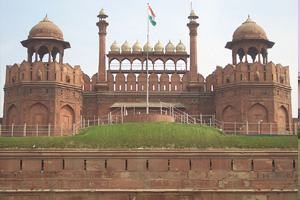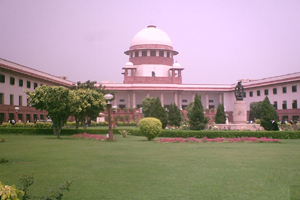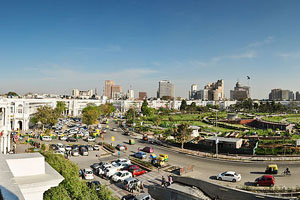Top Bank PO Coaching Institute in New Delhi, Best Bank PO Exams Preparation Classes In Delhi NCR
All India Help Desk - 9999265274
KHANPUR CENTRE
F-34,1st FLOOR,NEAR PNB,
DEVLI MORE, KHANPUR,
New Delhi-110062,
Phone No :- 011-64644951,
Mobile No :- 9999265274
SOUTH EX-01 CENTER
E-72, Near Bengali Sweets,
South Ex, Part-1,
New Delhi-110049,
Phone No :- 011-65164951,
Mobile No :- 9999736252
ABOUT DELHI
Delhi (also known as the National Capital Territory of Delhi) is a metropolitan region in India that includes the national capital city, New Delhi. It is India's second-most-populous city after Mumbai, and the largest city in terms of area. With a population of 22 million in 2011, the city is the fourth-largest city in the world. The NCT and its urban region have been given the special status of National Capital Region (NCR) under the Constitution of India's 69th amendment act of 1991. The NCR includes the neighbouring cities of Baghpat, Gurgaon, Sonepat, Faridabad, Ghaziabad, Noida, Greater Noida and other nearby towns, and has nearly 22.2 million residents.

Although technically a federally administered union territory, the political administration of the NCT of Delhi today more closely resembles that of a state of India, with its own legislature, high court and an executive council of ministers headed by a Chief Minister. New Delhi is jointly administered by the federal government of India and the local government of Delhi, and is the capital of the NCT of Delhi.
Delhi has been continuously inhabited since the 6th century BC. Through most of its history, Delhi has served as a capital of various kingdoms and empires. It has been captured, sacked and rebuilt several times, particularly during the medieval period, and the modern Delhi is a cluster of a number of cities spread across the metropolitan region. Delhi is believed to have been the site of Indraprastha, the legendary capital of the Pandavas during the Mahabharata. Delhi re-emerged as a major political, cultural and commercial city along the trade routes between northwest India and the Gangetic plain during the Delhi sultanates. In AD 1639, the Mughal emperor Shahjahan built a new walled city in Delhi, which served as the capital of the Mughal Empire from 1649 until the Rebellion of 1857. The British captured Delhi in 1857 and the city replaced Kolkata as the seat of British government in India in 1911. A new capital city, New Delhi, was built to the south of the old city during the 1920s. When the British left India in 1947, New Delhi became the national capital and seat of government. Today Delhi contains many important historical monuments, buildings and features.

Delhi is the largest commercial centre in northern India; it has an estimated net State Domestic Product (FY 2010) of 1578.17 billion (US$29 billion) in nominal terms and ~6300 billion (US$120 billion) in PPP terms. As of 2010, the per capita income of Delhi was 135820 (US$2,500), the third highest in India after Chandigarh and Goa. Delhi's Gross domestic product GDP (at 200405 prices), on average, grew by 10.7% between 2007 and 2012, making it one of the fastest growing cities in the region. As per the Economic survey of Delhi (20052006), the tertiary sector contributes 70.95% of Delhi's gross SDP followed by secondary and primary sectors, with 25.20% and 3.85% contributions respectively. Delhi's workforce constitutes 32.82% of the population, and
In 2001 the total workforce in national and state governments and the quasi-government sector was 620,000, and the private sector employed 219,000. Key service industries are information technology, telecommunications, hotels, banking, media and tourism. Construction, power, health and community services, and real estate are also important to the city's economy. Delhi has one of India's largest and fastest growing retail industries. Manufacturing also grew considerably as consumer goods companies established manufacturing units and headquarters in the city. Delhi's large consumer market and the availability of skilled labour has attracted foreign investment. In 2001, the manufacturing sector employed 1,440,000 workers and the city had 129,000 industrial units.
Delhi's culture has been influenced by its lengthy history and historic association as the capital of India. This is exemplified by many significant monuments in the city. The Archaeological Survey of India recognises 1200 heritage buildings and 175 monuments as national heritage sites. In the Old City, the Mughals and the Turkic rulers constructed several architecturally significant buildings, such as the Jama Masjid India's largest mosque and the Red Fort. Three World Heritage Sites the Red Fort, Qutab Minar and Humayun's Tomb are located in Delhi. Other monuments include the India Gate, the Jantar Mantar an 18th-century astronomical observatory and the Purana Qila a 16th-century fortress. The Laxminarayan temple, Akshardham temple, the Bahai Lotus temple and the ISKCON temple are examples of modern architecture. Raj Ghat and associated memorials

houses memorials of Mahatma Gandhi and other notable personalities. New Delhi houses several government buildings and official residences reminiscent of British colonial architecture, including the Rashtrapati Bhavan, the Secretariat, Rajpath, the Parliament of India and Vijay Chowk. Safdarjung's Tomb is an example of the Mughal gardens style. Some regal havelis (palatial residences) are in the Old City.
Delhi's association and geographic proximity to the capital, New Delhi, has amplified the importance of national events and holidays like Republic Day, Independence Day (15 August) and Gandhi Jayanti. On Independence Day, the Prime Minister addresses the nation from the Red Fort. Most Delhiites celebrate the day by flying kites, which are considered a symbol of freedom. The Republic Day Parade is a large cultural and military parade showcasing India's cultural diversity and military strength. Over the centuries, Delhi has become known for its composite culture, and a festival that symbolises this is the Phool Walon Ki Sair, which takes place in September. Flowers and pankhe fans embroidered with flowers are offered to the shrine of 13th century Sufi saint Khwaja Bakhtiyar Kaki and the Yogmaya temple, both situated in Mehrauli.

Private schools in Delhi which use either English or Hindi as the language of instruction are affiliated to one of three administering bodies, the Council for the Indian School Certificate Examinations (CISCE), the Central Board for Secondary Education (NCERT(CBSE)) or the National Institute of Open Schooling (NIOS). In 200405, approximately 15.29 lakh (1.529 million) students were enrolled in primary schools, 8.22 lakh (0.822 million) in middle schools and 6.69 lakh (0.669 million) in secondary schools across Delhi. Female students represented 49% of the total enrolment. The same year, the Delhi government spent between 1.58% and 1.95% of its gross state domestic product on education.
Indian Institute of Technology, Delhi is ranked as Asia's fourth-best institute in science and technology in the year 1999.
Schools and higher educational institutions in Delhi are administered either by the Directorate of Education, the NCT government or private organisations. In 2006, Delhi had 165 colleges, five medical colleges and eight engineering colleges, seven major universities and nine deemed universities. Indraprastha Institute of Information Technology, Delhi Technological University, Guru Gobind Singh Indraprastha University and National Law University are the only state universities, Indira Gandhi National Open University is for distance education and the rest are central universities. As of 2008, about 16% of all Delhi residents possessed at least a college graduate degree.
Best Bank PO Coaching in Education & Learning under Delhi.
BANK PO (IBPS-CWE)
The banking sector attracts hordes of people to its recruitment drives because of the job security, decent salary structure and great career prospects it offers. Openings are available in banks at various levels, right from Clerical posts to that of Probationary Officers.
Institute of Banking Personnel Selection IBPS or Institute of Banking Personnel Selection acquired independent status in 1984. The credit to the initiative goes to the Reserve Bank of India (RBI) and the Nationalized Banks. Dr. Manmohan Singh who was the governor of RBI at the time, became the first Chairman of the Governing Board of IBPS. Prior to 1984, the institute was a unit of National Institute of Bank Management (NIBM) and was called Personnel Selection Services (PSS). IBPS has a mandate from nineteen Public Sector Banks to conduct the eligibility exam for selection to these banks. The exam is termed as the Common Written Examination. IBPS conducts CWE (Common Written Examination) is accepted by nineteen nationalized banks in India.
List of banks that accept CWE
- Allahabad Bank
- Andhra Bank
- Bank of Baroda
- Bank of India
- Bank of Maharashtra
- Canara Bank
- Central Bank of India
- Corporation Bank
- Dena Bank
- Indian Bank
- Indian Overseas Bank
- Oriental Bank of Commerce
- Punjab National Bank
- Punjab & Sind Bank
- Syndicate Bank
- Union Bank of India
- United Bank of India
- UCO Bank
- Vijaya Bank
Bank PO Coaching in Delhi
Exams for different cadres
- IBPS CWE PO/MT for the position of Probationary Officer or Management Trainee. IBPS PO is conducted twice in a year.
- IBPS CWE Clerk for Clerical positions. This exam is also conducted twice in a year.
- IBPS Specialist Officer. This exam is announced from time to time and covers specialist positions in banks.
IBPS CWE Scorecard
In all these exams, a scorecard is issued to all candidates who secure more than minimum qualifying marks in each test of the examination. The candidates can reappear in the exam if they would like to improve their score. Candidates who appear for the CWE will be able to check their status after the examination. Scorecards will be issued to candidates who secure minimum qualifying marks and above in each test of the examination. Successful candidates in the CWE who meet the eligibility criteria can apply for jobs in participating banks.
Each participating Public Sector Bank independently issues a separate recruitment notification. The successful candidates are required to apply to any of the participating banks when the job openings are announced. The banks will notify vacancies as well as eligibility criteria such as age, educational qualification, and minimum CWE score. Banks may also put forward proficiency in local languages as a eligibility criteria, especially in the case of clerical cadre recruitment. Each bank will then individually shortlist candidates and carry out their own selection processes such as Interviews etc. for final selection.
If you are looking for Bank Jobs in Public Sector Banks and Regional Rural Banks (RRB's) in 2013, then you are at right place.In order to apply for PO,Clerk and Specialist Officers vacancies in these banks, you will have to appear in the IBPSRecruitment Exams in 2013, popularly known as IBPS Common Written Exam (CWE)
Under the IBPS Recruitment 2013, CWE's will be conducted for the posts of Clerks, PO' and Specialist Officers in 19 Public Sector banks and a Separate CWE will be conducted for Gram in Banks.
What is an IBPS Common Written Exam ?
As the name specifies IBPS Common Written Exam is a Common Exam that is conducted by IBPS on the behalf of participating banks. It is worth mentioning here that in May, 2011 Government of India had approved the IBPS for conducting the recruitment exams on the behalf of banks.
In this scheme of examination, IBPS invites online applications from the eligible candidates. After receiving applications, IBPS conducts a Common Written Exam (CWE)The Successful students in the CWE are then issued scorecards, based on which they can apply for Jobs in Public Sector banks.
IBPS Recruitment 2013
Until March 2012, IBPS is conducting Common Written Exams only for 19 Public Sector banks.But in March 2012, IBPS had been given additional responsibility to conduct the Common Written Exam for Regional Rural Bank's and following these orders of Govt of India, IBPS decided to conduct the First Common Written Exam for 82 Regional Rural Banks in September, 201
Now every one is waiting for IBPS Recruitment in 2013
As large number of bank employees are retiring in the coming 2-3 years, so there is huge requirement of Jobs in Public Sector as well as Regional Rural Banks and as such the IBPS decides to conduct the 5 Common Written Exams for Public Sector Banks every year and 2 CWE's for Regional Rural Banks.
As such IBPS had no proper time table for conducting these Common Written Exams, so we cannot confirm the IBPS Exam Dates in 2013.The Dates for IBPS Recruitment 2013 will be decided by IBPS and will be communicated to candidates through Official Website.
IBPS PO Recruitment 2013
Since IBPS Conducts the PO Exam twice an year. So we can expect the IBPS PO recruitment Notification to be published in January 2013. Although we are not confirming the dates, as the same will only be decided by IBPS
Students who wish to apply for PO Jobs in Public Sector banks will have to appear in the IBPS PO Common Written Exam in 2013. In order to appear in the IBPS PO exam, candidates must be a Graduate and lying in the Age Limit of 21- 30 years



